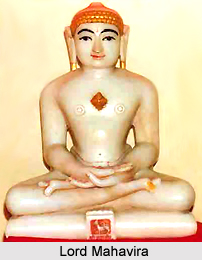 History of Madhubani District in Bihar states that this district was carved out from old Darbhanga District in the year 1972 because of reorganization of the districts in Bihar. Madhubani District was formerly the northern sub-division of Darbhanga District.
History of Madhubani District in Bihar states that this district was carved out from old Darbhanga District in the year 1972 because of reorganization of the districts in Bihar. Madhubani District was formerly the northern sub-division of Darbhanga District.
Early History of Madhubani District
There are no prehistoric sites in the district though remains of the earliest aboriginal population can be seen in some parts of the district. Some historical accounts have referred to the existence of the people namely Tharu tribe and Bhar in the erstwhile old sub-division of Madhubani. It also appears that Kiratas also inhabited the district for a considerable period. Bihar settlements in the northeastern part of the district indicate that they possibly wielded some power in the remote part. Prior to Aryanisation of this area seems to have been under the aboriginal population and Lord Shiva worship was predominant. The kingdom of Videhas included a greater portion of Madhubani District. Traditions associated with this district also say that the Pandavas during their exile stayed in some portion of the present district and Pandaul (block headquarters) is associated with them. Legends and traditions associate this district with a number of sages of ancient times. Since the whole of North Bihar was deeply influenced by the teachings of Lord Mahavira and Lord Buddha, it is only natural to infer that the people of Madhubani actively participated in the propagation of these reform movements. Both Jain and the Buddhist literature contain innumerable references of Madhubani District and its neighbouring territories. However, very little is known about the history of Madhubani District from the time of the Kushana Empire to the rise of the Gupta Empire.
Medieval History of Madhubani District
After a temporary period of instability, Madhubani came under the control of the Oinwaras, also known as Sugauna dynasty. When Hajiriyas of Bengal divided Tirhut into two parts, Oinwar Raja shifted his capital to Sugauna near Madhubani. There was no event of great significance during the next century and a half. The decisive victory of the British in the Battle of Buxar in 1764 gave them undisputed sway over the lower provinces of Bengal. Therefore, Madhubani, along with other parts of Bihar, passed under the control of British.
Modern History of Madhubani District
The British administrators took steps to establish law and order. In 1857, patriotic fervour raged-high in Madhubani District as in many other districts of Bihar. Later the call of the non-co-operation movement also found adequate response in the district. Further, according to the history of Madhubani District, Khadi became very popular and Madhubani soon emerged as a renowned centre of Khadi production. The popularity of Khadi weaving and spinning in the district went a long way in inspiring the people towards the nationalist cause. Thus, history of Madhubani District shows that this district played an important role in the country`s freedom struggle.



















